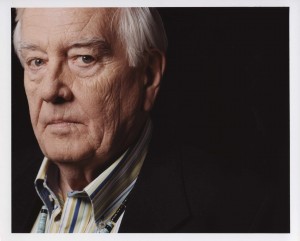Yesterday, after almost polishing off my article on postminimalism for The Ashgate Companion to Minimalist Music, I posted a description of my LexisNexis search for the origins of the musical use of the term postminimalism. Perhaps you read it before it disappeared. I traced the term back to a Jon Pareles review of March, 1983, and added some references by Joshua Kosman, K. Robert Schwarz, and Keith Potter. Then the inexhaustible Galen Brown wrote in to tell me about some earlier references I had missed. He was right. But then I noticed, in the list he sent, that all of his new references were for post-minimalist and post-minimalism – with a hyphen. This about doubled the references for the period I was looking at, 1980-1996 (and LexisNexis seems to only go back to 1980, so data earlier than that remains in doubt). I started to add updates to the blog post correcting it for Galen’s new info, but I needed one for about every other sentence, and it was a potential mess. Ridiculous. I’d screwed up. So I just took the post down, sending Galen thanks and a promise to rewrite it.
But then I did my own search for hyphenated post-minimalism, and it was very interesting what came up. The bulk of the early hyphenated references, going back to 1981 (and who knows if any further?), were from Times critic John Rockwell. He tended to use the term either as a non-specific vague category, or to refer to the post-1976-or-some-other-point outputs of Reich and Glass, as well as the more flamboyant music of John Adams. Schwarz, whose reference was from his book Minimalists, and thus not from LexisNexis, also applied it to Adams, and also used the hyphenated form. (A couple of morons like Donal Henahan employed the hyphenated form sarcastically, and without having the vaguest idea what they were talking about.) The critics who used the non-hyphenated form, Pareles, Kosman, Potter, and myself, used it in articles about younger, then-less-famous composers writing in a style rather markedly different from minimalism. Search post-hyphen-minimalism (often typeset post-Minimalism with a capital M), and you find articles about Reich, Glass, Adams, maybe Andriessen; search postminimalism, and you find articles on Paul Dresher, Steve Martland, David Lang, Janice Giteck, Rocco diPietro. There’s a little bleed-over, and it’s not always possible to know whether the decision to hyphenate is editorial, but the consistency is sufficiently compelling. In a couple of cases, the same critic will use the hyphen for Reich or Adams, and abandon it for anyone younger. So there seems to be a palpable critical tradition for using post-hyphen-minimalism to distinguish the 1980s music of Glass, Reich, and Adams from their more repetitive 1970s music, and using postminimalism straight up as a style pioneered by younger composers who were never minimalists to begin with. In a sense I had been right all along: Pareles presciently identified the unhyphenated form of the style, and I was the second, in 1988, to refer to it in print. And that distinction will prove very useful to my article.
(I will add that I’ve always been leery of the tendency to draw some big, ripping distinction between the early and late styles of Glass and Reich. Every composer develops as he goes through his career, of course, but these two have changed far less than most composers do, and I’ve never been able to find some major dividing line that’s supposed to separate out the radical early Reich and Glass from the allegedly more palatable later stuff. In Reich’s case, the scores to his recent Sextet and Double Sextet look so similar to those for Six Pianos, Music for 18 Musicians, and Tehillim that I can’t see that much territory has been traversed in-between. And in Glass’s case, any distinction between early and late seems dwarfed by the eternal gulf between his orchestral music and his far more rhythmically interesting music for his own ensemble. The use of post-hyphen-minimalist in the articles mentioned above seems less a firm distinction than a deferential gesture to famous composers who hate the term minimalism, made by critics who want to keep getting permission to interview them. Anyone who can give me a hard-and-fast criterion for post-hyphen-minimalism that will work for every Glass/Reich piece is welcome to try.)

